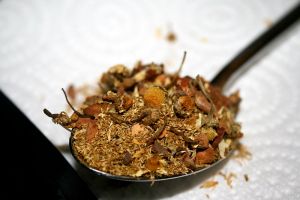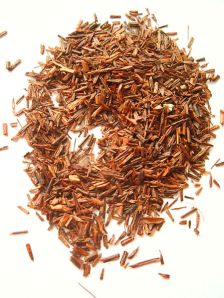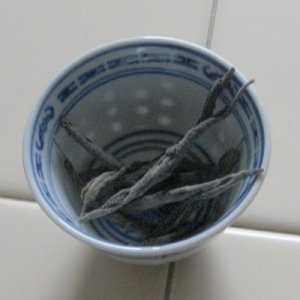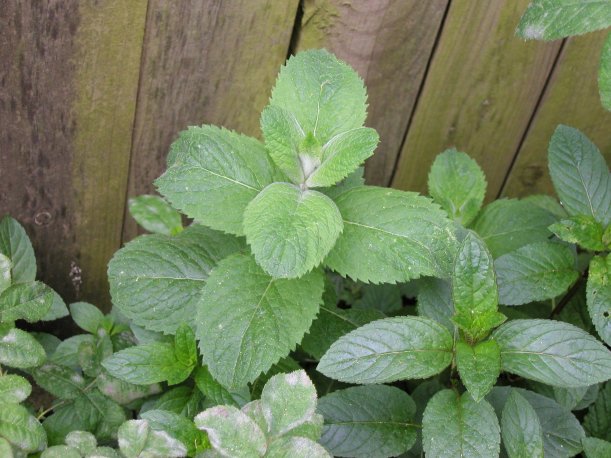This is inspired by my original posts Oxidizing Herbs like Black or Oolong Tea and Sage Tea made like Black Tea.
Oxidation is one of the key aspects of tea production. Usually, oxidation is presented as being the main characteristic that distinguishes black teas (which are oxidized) from green teas (which are unoxidized). Since writing my original post, I have learned a lot more about tea production, and I have researched and compiled a page on the oxidation of tea on RateTea. This page goes into more depth, explaining how a lot of the ways in which the topic of oxidation is presented are oversimplifications. If you want to learn more about this process, I recommend visiting that page.
This page is about something different: using an oxidation process similar to that used to produce black teas to process the leaves of other plants.
Herbal Teas Are Generally Not Deliberately Oxidized: A Few Exceptions
In many respects, herbal teas are often considered analogous to true teas from the Camellia sinensis plant. Yet there is one key difference: the herbs used to produce most herbal teas are rarely oxidized. Instead, most herbs are usually just collected and dried. This process makes them most similar to white teas, which are the least processed of teas on the market. The modest amount of oxidation that happens to these herbs is an unintended consequence of the drying process, not an intentional and essential part of processing.

Chamomile, like many herbs used in herbal tea, is gathered and dried without any additional processing to induce oxidation.
There are several notable exceptions to this trend. Rooibos and honeybush, both referred to as South African red tea, are both produced through a process that involves oxidation, which can be interpreted as making them somewhat distant cousins of black tea. Incidentally, rooibos is often discussed as being among the most “tea-like” of herbal teas, and this similarity in production may explain why. The process used to oxidize rooibos and honeybush, however, is quite simple, involving collecting the leaf and letting it sit in heaps outdoors–less of a controlled process than tea goes through, but achieving similar results.
The following image is licensed under the Free Art License, courtesy of Wikimedia Commons:

Rooibos is traditionally oxidized during its production, turning it red, much like how black tea turns a dark color.
Yerba mate and Guayusa, the caffeinated herbal teas produced from species of holly plant native to South America, also are processed in a bit of a more involved way, although not necessarily one involving oxidation. Often, the leaves are dried and aged, and then roasted, however, there are also un-aged and un-roasted versions on the market. There is, however, a case of people processing Yerba mate more like tea, the Premium Yerba Mate Buds sold by Upton Tea. But this sort of endeavour is very rare.
Being curious, however, I repeatedly asked myself the question: why don’t more people try to process herbs like black tea? It may be difficult to get good results from such a project (I wasn’t a huge fan of the Yerba mate buds described above) but I at least wanted to try.
My Experiment: Oxidizing Common Sage, Lemon Balm, and Other Herbs
Some time ago, in the fall of 2009, shortly after launching RateTea, I became fascinated by the idea of applying a similar production process to herbs, to the one usually used to make black tea. I tried this out on a few herbs, including common sage, Monarda sp. (Bee Balm, Wild Bergamot, Oswego tea), lemon balm, and various mints.
I experimented with a number of different attempts on the different herbs, but they all involved picking the leaf and bruising it shortly after harvest (before it dried out), and then allowing it to sit in a damp area until the leaf turned completely dark (this took a matter of hours). To do this, I placed the leaves on a plate with a damp cloth over them, and stored them in a cool, dark area. After the leaf was fully oxidized, I then heated the leaf very slightly using a toaster oven.
Trial and error taught me that, with tougher leaves like sage, extensive bruising is needed to ensure full oxidation. The first few batches I attempted came out with splotchy oxidation. With the tougher herbs, like common sage, I ended up using a rolling pin on a hard surface to crush the leaves.
Here is a photo from one batch of common sage, Salvia officinalis, where I had tightly twisted and rolled the leaf:

Leaves of common sage (Salvia officinalis) which have been bruised and allowed to oxidize similarly to black tea.
It was fun to see how the leaf can be formed into different shapes. These leaves looked similar to a Ceylon Oolong tea, unfortunately discontinued, Shanti Tea’s Thousand Arrows.
The result of this process, flavor-wise, was also promising. The oxidation seemed to improve the flavor and aroma of the sage, for drinking, as sage can be a bit dominating and harsh. The other herbs also worked well, although some were better than others. The best result in terms of flavor was lemon balm. As I noted in my original post, lemon balm yielded the batch that came out most like black tea, and it had some floral tones that are absent in the straight dried herb, and was also more vegetal, but was less lemony. Apple mint and the Monarda also yielded good results.
What do you think?
I would love to try this again some time soon. I am still curious to know if anyone else has ever tried this sort of project. I did not get any comments on my original post, as it was from before I had developed much of a following for my blog. I would be especially interested to learn of attempts by people who have had some experience in or first-hand exposure to tea production.
Some questions for you:
- Do you find this idea as intriguing as I do?
- Have you ever tried processing any herbs in this manner, so as to encourage oxidation, or do you know anyone who has?
- Whether or not you have ever tried this, do you have any advice or suggestions about processing, perhaps from knowing a bit more about tea production than I do?
- Do you have any suggestions of herbs to try?






